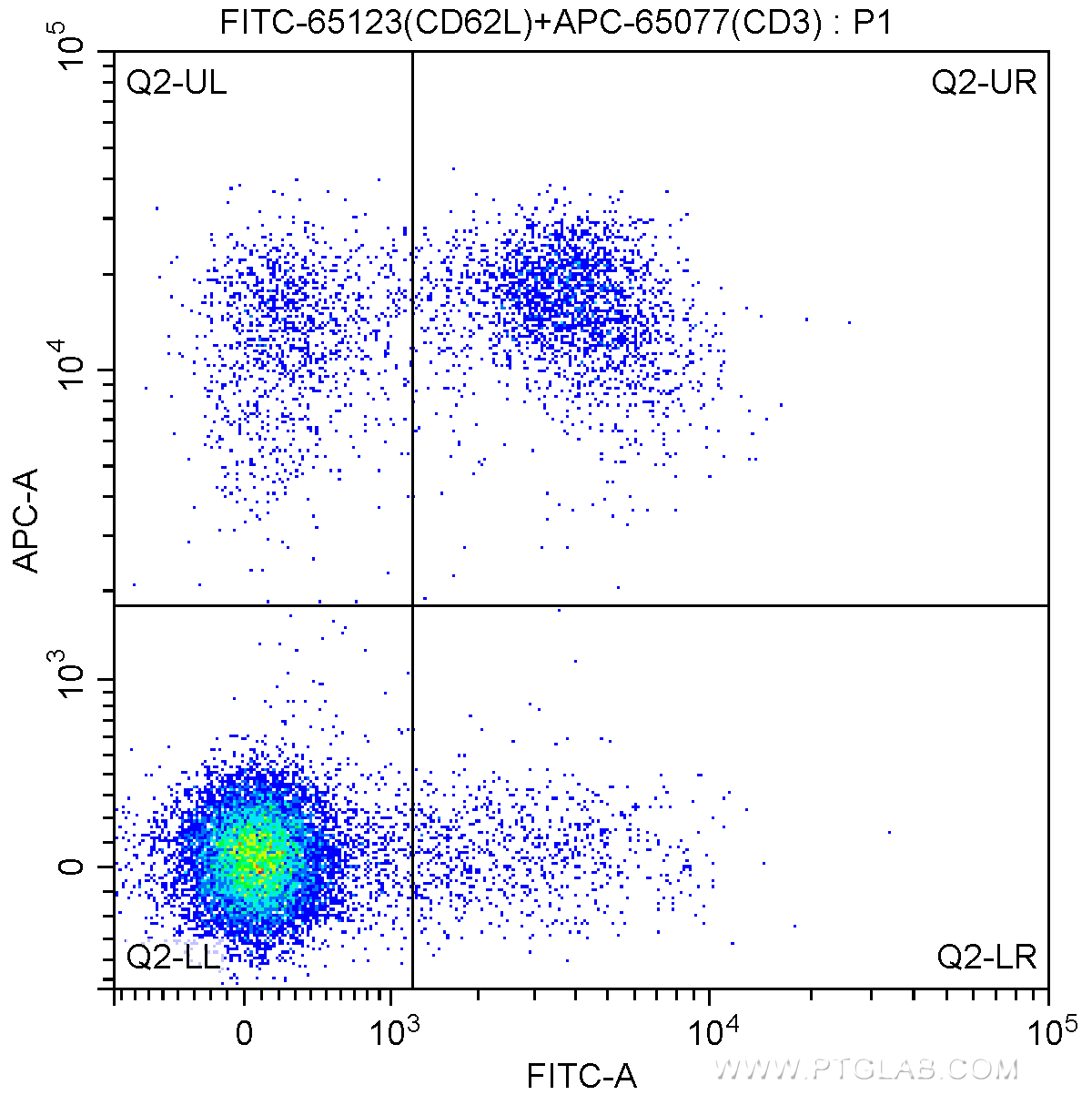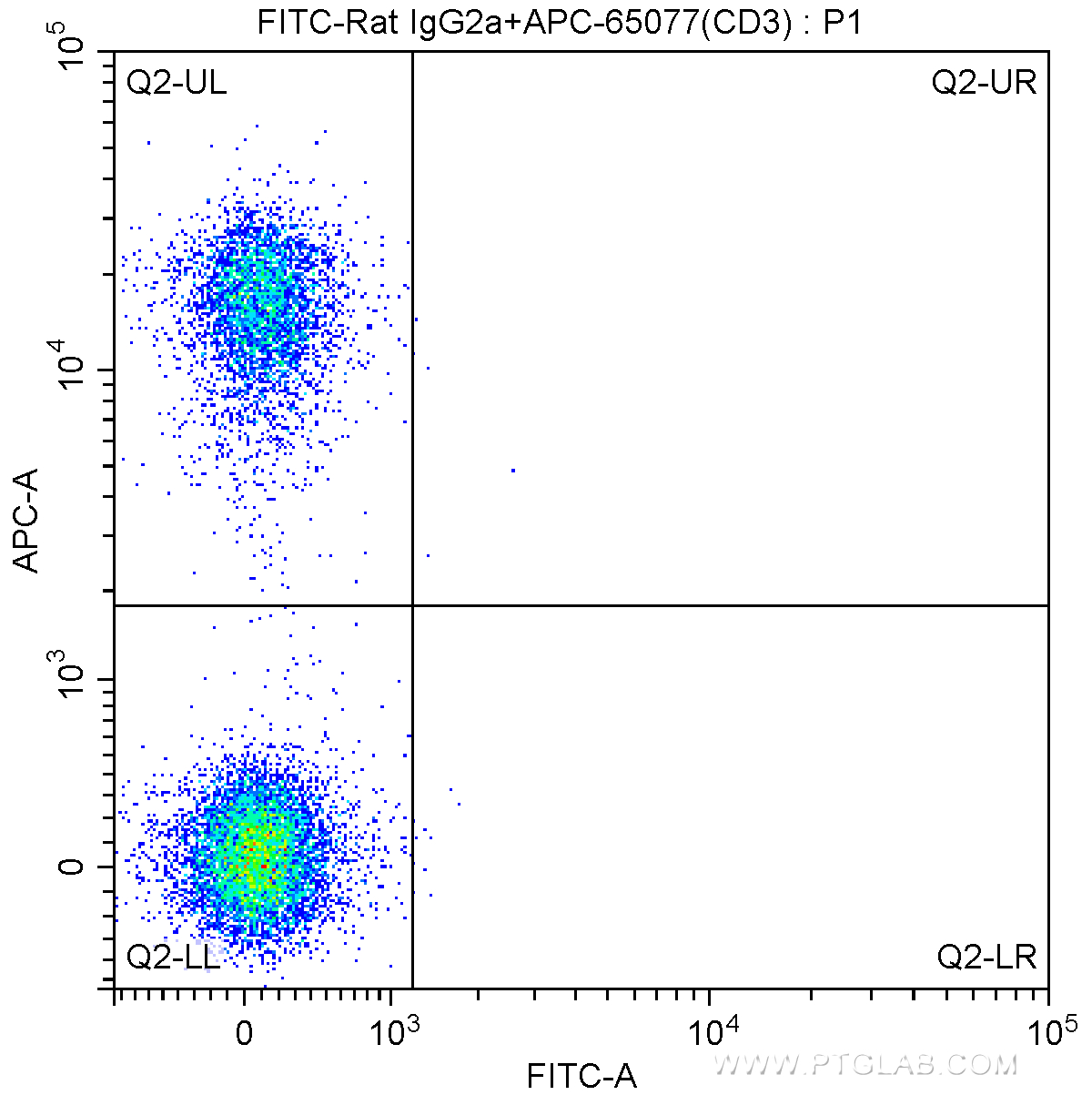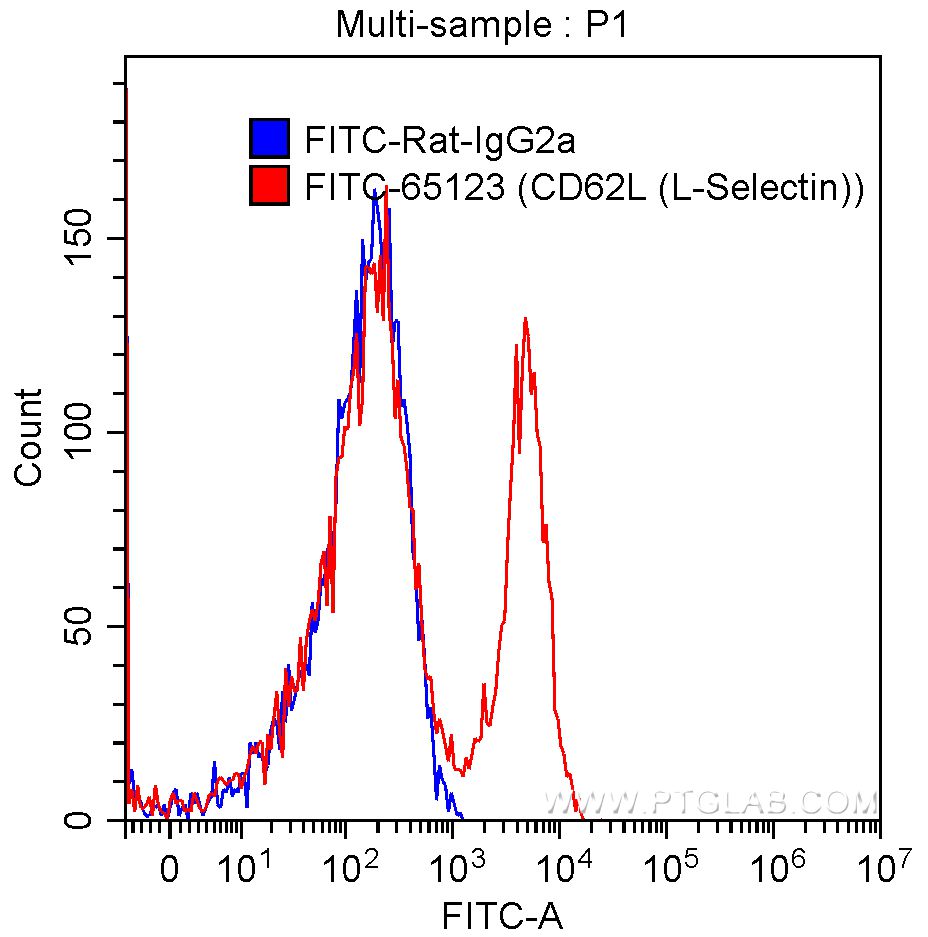验证数据展示
经过测试的应用
| Positive FC detected in | mouse splenocytes |
推荐稀释比
| 应用 | 推荐稀释比 |
|---|---|
| This reagent has been tested for flow cytometric analysis. It is recommended that this reagent should be titrated in each testing system to obtain optimal results. | |
| Sample-dependent, Check data in validation data gallery. | |
发表文章中的应用
| FC | See 1 publications below |
产品信息
FITC-65123 targets CD62L (L-Selectin) in FC applications and shows reactivity with Mouse samples.
| 经测试应用 | FC Application Description |
| 文献引用应用 | FC |
| 经测试反应性 | Mouse |
| 免疫原 | C3H/eb mouse B lymphoma 38C-13 种属同源性预测 |
| 宿主/亚型 | Rat / IgG2a, kappa |
| 抗体类别 | Monoclonal |
| 产品类型 | Antibody |
| 全称 | selectin, lymphocyte |
| 别名 | CD62L (L-Selectin), Sell |
| GenBank蛋白编号 | BC052681 |
| 基因名称 | CD62L |
| Gene ID (NCBI) | 20343 |
| RRID | AB_2883789 |
| 偶联类型 | FITC Fluorescent Dye |
| 最大激发/发射波长 | 498 nm / 526 nm |
| 形式 | Liquid |
| 纯化方式 | Affinity purification |
| UNIPROT ID | P18337 |
| 储存缓冲液 | PBS with 0.09% sodium azide and 0.1% gelatin , pH 7.2 |
| 储存条件 | Store at 2-8°C. Avoid exposure to light. Stable for one year after shipment. |
背景介绍
CD62L, also known as L-selectin or SELL, is a member of the selectin family of adhesion molecules that also include CD62E (E-selectin) and CD62P (P-selectin) (PMID: 2663882, 2473156, 1382078). CD62L is a highly glycosylated protein of 95-105 kDa on neutrophils and 74 kDa on lymphocytes (PMID: 1382078; 1694883, 1695155). CD62L is expressed on the surface of most leukocytes, including lymphocytes, neutrophils, monocytes, eosinophils, hematopoietic progenitor cells, and immature thymocytes (PMID: 1694883, 1688580). It mediates the binding of lymphocytes to high endothelial venules (HEV) of peripheral lymph nodes through interactions with a constitutively expressed ligand, and is also involved in lymphocyte, neutrophil, and monocyte attachment to endothelium at sites of inflammation (PMID: 1382078).
实验方案
| Product Specific Protocols | |
|---|---|
| FC protocol for FITC CD62L (L-Selectin) antibody FITC-65123 | Download protocol |
| Standard Protocols | |
|---|---|
| Click here to view our Standard Protocols |


